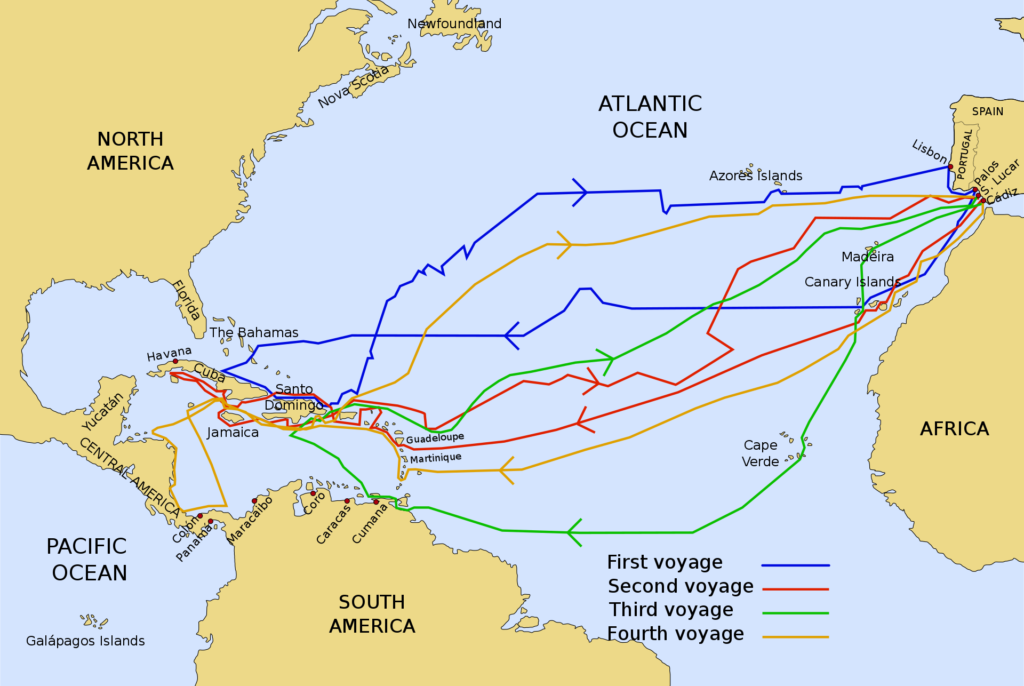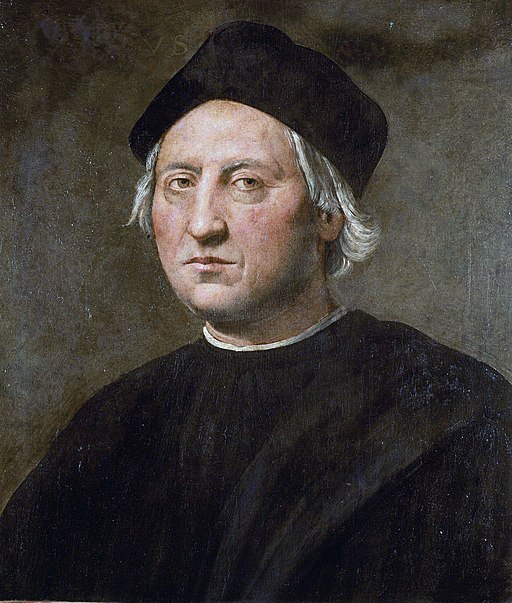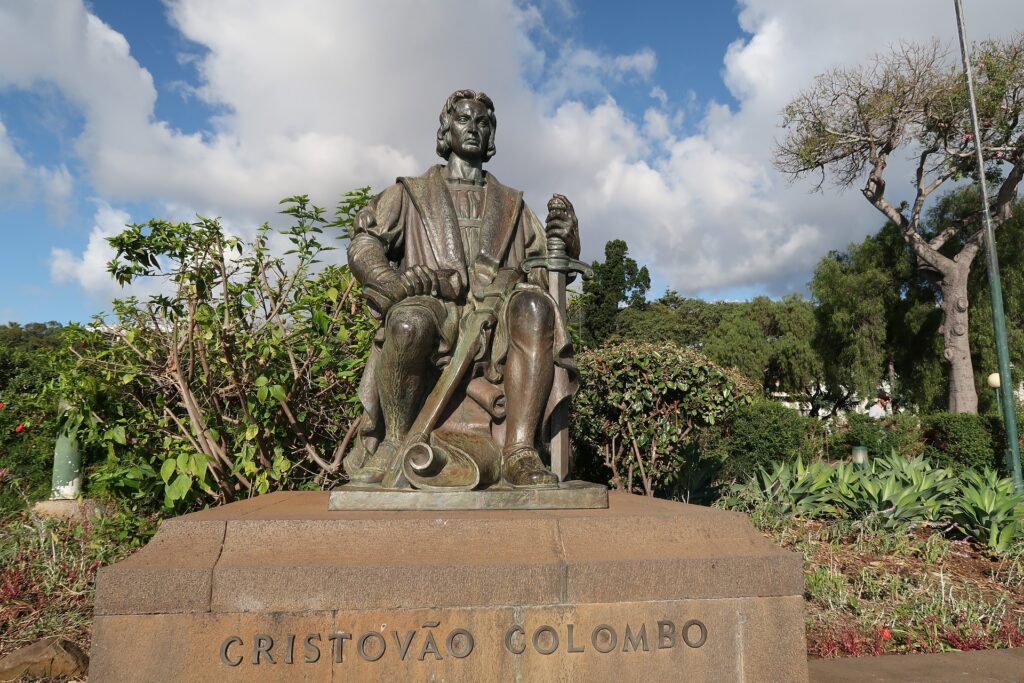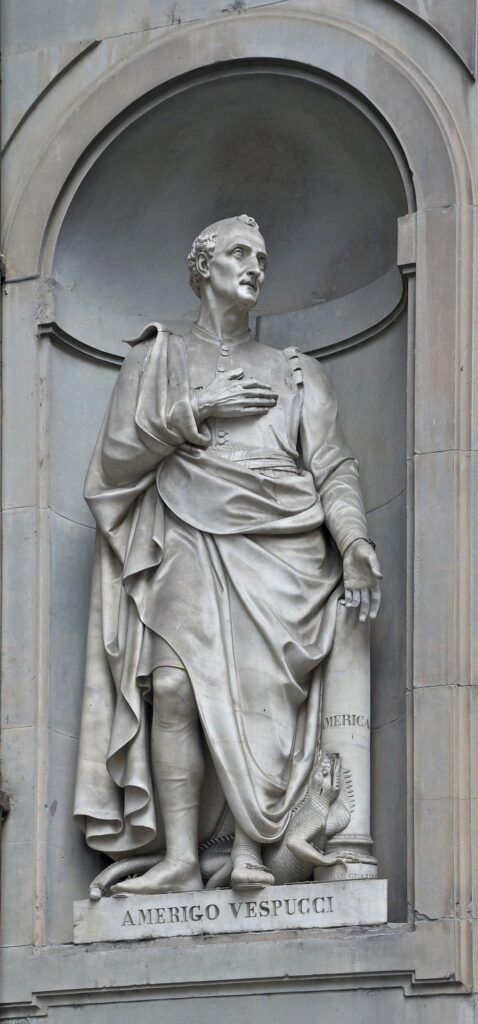530 years ago the discovery of America
It was October 12, 1492 when Christopher Columbus first landed on the American continent marking the end of the Middle Ages and the beginning of the modern age.

The discovery of America “happened by accident” in that Christopher Columbus had set out for the Indies with the goal of reaching them by circumnavigating Africa and to prove that the earth was indeed round: upon his arrival in America he actually believed he had arrived on an island in the Japanese archipelago.
On August 3, 1492, Columbus set sail from Palos (Spain) with the three famous caravels Niña, Pinta and Santa Maria and a Spanish crew, landing at Guanahani, which he christened San Salvador, taking possession of it in the name of the sovereigns of Spain.
It was October 12, 1492, the official day of the discovery of the Americas, which also marked the end of the Middle Ages and the beginning of the Modern Age.
Initially, Spain and Portugal devoted themselves to colonizing American lands without understanding the fact that they were on a “new” continent. At that time, explorations were carried out by many “Conquistadores,” and it was not until the early 16th century that Amerigo Vespucci, originally from Florence, realized that the lands discovered by Columbus were not part of the Eurasian continent.
With the discovery of the new continent, new products such as corn, potato, cocoa, tomato and tobacco arrived in Europe.

Short biography of Christopher Columbus
Christopher Columbus known in Spanish-speaking countries as Cristóbal Colón, in Portuguese-speaking countries as Cristóvão Colombo in italian-speaking countries as Cristoforo Colombo was born in Genoa in the then Republic of Genoa (now Italy) in 1451 and died in Valladolid, Spain, on May 20, 1506. Since 1899 his remains have rested in Seville Cathedral.
He was one of the most important figures in history leading to the discovery of new geographical areas then unknown primarily the continent of America.
Little is known about the early life of Christopher Columbus, the son of Domenico Colombo and Susanna Fontanarossa, two Genoese merchants: he began sailing at a very young age, visiting numerous countries such as Chios, an island in the Aegean Sea then ruled by Genoa; Bristol, England; Galway, Ireland, where he apparently visited St. Nicholas Collegiate Church; and Iceland.
In the fall of 1477 he sailed on a Portuguese ship from Galway, Ireland, to Lisbon, where he was reunited with his brother Bartholomew, a cartographer, and remained there for several years, deepening his reading and drawing of maps and studying the works of many geographers, convincing himself of the new theory circulating, namely that the Earth was round and not flat. During this period he began to cultivate the idea of reaching the Indies by sailing westward.
To confirm his theory he approached several European courts to finance his voyage, and it was not until 1492 that the rulers of Spain, Ferdinand and Isabella, accepted his proposal.
End of the era of Elizabeth II of the United Kingdom
Mikhail Gorbachev and a part of history goes away

Anniversary celebrations
“Columbus Day” is one of the most important American holidays and also one of the most widely celebrated in the world.
In the United States, Columbus Day is celebrated to commemorate Christopher Columbus’ arrival in the New World on October 12, 1492. It was President Franklin Delano Roosevelt who established Columbus Day as a national holiday throughout the United States of America.
In Latin America, October 12 is commemorated as Christopher Columbus Day, but with a few different nuances: in Argentina, Chile or Mexico it is Día de la Raza and commemorates the first encounter between Europeans and Native Americans while in Venezuela and Nicaragua they celebrate Día de la Resistencia Indígena, aimed at enhancing the traditions and culture of the native inhabitants and commemorating the resistance of the natives against the conquistadors.
On October 12 in Spain, Día de la Hispanidad is celebrated: the culmination of the holiday is celebrated in Madrid at 11:00 a.m. in the Plaza de Cuzco in the presence of the Spanish Royalty where the famous military parade and an air show of enormous fascination and fascination can be seen. This holiday is one of national pride and symbolizes the country’s cultural and linguistic expansion outside the European continent.
In Italy, October 12 is the National Day of Christopher Columbus, an anniversary established only since 2004 to celebrate the historic feat of the discovery of America. On this day we also celebrate “Chocoday,” or the festival of chocolate since cocoa, originally from America arrived in Europe only after that discovery.

The term America
America is named after the explorer Amerigo Vespucci, who was born in Florence in the then Florentine Republic (now Italy) on March 9, 1454, and died in Seville, Spain, on February 22, 1512, who was the first to realize that he had not arrived in the Far East, but had touched an entirely new territory that he called the “New World.”
The circulation of letters where Vespucci gave extensive descriptions of this led German cartographer Martin Waldseemüller to name the continent “America“





